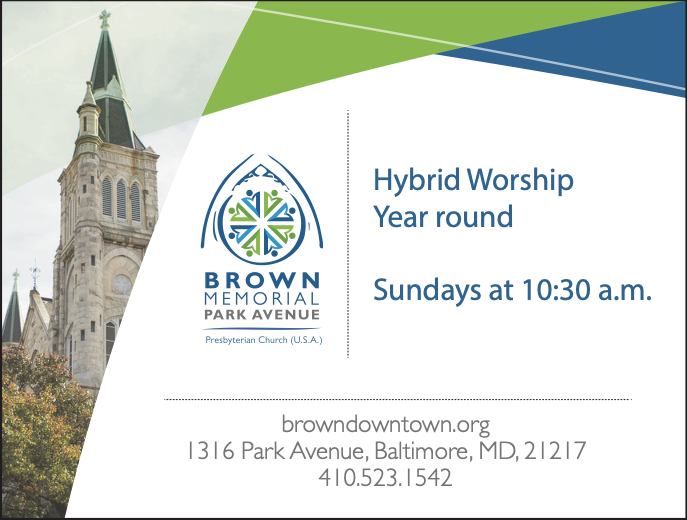Contemplating exterior or major interior changes to your property in Bolton Hill?
This page provides the information you need to know around Baltimore City requirements for exterior work on properties in the Bolton Hill Historic District and interior work citywide.
CHAP Review and Permit Process for Exterior Property Changes
Permit Process for Interior Property Changes
Reporting Work without a Permit
Frequently Asked Questions about Exterior Property Changes
Overview of ARC and CHAP
To preserve the intact historic character and irreplaceable architectural details of the neighborhood, Bolton Hill was designated a Baltimore City historic district in 1967, followed by being listed on the National Register of Historic Places in 1971, a testament to its national historic importance. Owners of historic homes in Bolton Hill must abide by exterior preservation standards to maintain the character of the neighborhood. When these standards slide, the whole neighborhood suffers bit by bit.
BHCA’s Architectural Review Committee (ARC) acts as the neighborhood advisory group in support of the City’s Commission for Historical and Architectural Preservation (CHAP), whose mission is to celebrate Baltimore’s history, help preserve and revitalize neighborhoods, and promote historic preservation as a proven economic driver. ARC is composed of volunteers who live or have lived in Bolton Hill and have a good understanding of how costly it can be to maintain older buildings. They draw on their personal experience to help provide guidance to property owners seeking external changes to their homes in addition to their advisory role for CHAP.
All exterior work to any structure within the Bolton Hill historic district–including changes to windows, doors, lighting, painting, additions, fencing, hardscaping, and major landscaping–is subject to review by ARC and approval by CHAP. ARC makes an assessment of whether the project adheres to the Secretary of the Interior’s Standards for the Treatment of Historic Properties before submitting comments to CHAP for project approval.
With project approval, CHAP issues an Authorization to Proceed certificate, which must be obtained prior to receiving a building permit for exterior work. Subject to zoning code constraints, interior work related to demolition or alterations involving electrical, plumbing, or heating/cooling on any building in Baltimore City must have building permits, but interior work does not require CHAP approval.
Additional information about CHAP approval for exterior work is on the CHAP website, including Design Guidelines that must be followed. For questions and guidance on exterior property changes, contact the ARC chairperson at architecture@boltonhillmd.org.
Since all of Bolton Hill is an historic district, your renovation or rehabilitation project may qualify for tax credits through the Baltimore City’s Historic Tax Credit Program or the Maryland Historic Revitalization Tax Credit Program, which must be approved before any work on the house commences.
CHAP Review and Permit Process for Exterior Property Changes
If you are a homeowner or developer planning exterior changes of any kind to your home in Bolton Hill, PLAN AHEAD! It’s to the benefit of property owners to consult ARC whenever contemplating exterior changes to their properties. Keep in mind that the approval process could take several weeks and that your plans must be reviewed by ARC and approved by CHAP BEFORE construction or alternations can begin, so consult ARC early on to make the process as streamlined as possible.
Planning an exterior project? Here’s a step-by-step guide on what to do:
- Go to the CHAP website and download an Authorization to Proceed application. Click on “Applications” and then on “Authorization to Proceed Application”.
- Fill out the application completely. A fully completed application and good photos of current conditions make the application approval process easier and faster.
- Once your application is finished, email it to both the ARC chairperson at architecture@boltonhillmd.org and the CHAP liaison for Bolton Hill, Lauren Schiszik, at Lauren.Schiszik@baltimorecity.gov at the same time. Sending the application to both addresses at the same time will speed up the review process.
- For a simple or straightforward project involving minor changes or repairs that comply with the City’s Design Guidelines, the ARC chairperson will likely decide that it does not warrant full committee review and send it directly to CHAP for approval. Otherwise, it is helpful to attend the ARC meeting when your application will be reviewed. The committee generally meets on the third Wednesday of each month.
- Provided that the ARC recommends–and CHAP affirms–approval, CHAP will issue an Authorization to Proceed certificate directly to the property owner, who may then obtain a City building permit and undertake the planned work.
- Post your Authorization to Proceed certificate and your City building permit in a prominent place on the front of the building for the entire duration of the construction work.
Permit Process for Interior Property Changes
A property owner in Baltimore City must obtain a building permit before undertaking any substantive interior or exterior changes to a property, which are also subject to City inspection after the work is complete. Permits ensure that work on buildings is performed according to code requirements and are safely habitable. Building permits must be posted to a visible place on the front of the building for the entire duration of the construction work.
Expectations of Contractors
Any homeowner knows that contractors are needed from time-to-time to repair a problem, upgrade home systems, or perform major remodeling work. BHCA recommends informing adjacent neighbors of any work expected to be noisy or to cause another inconvenience. In addition to obtaining building permits, it is the homeowner’s responsibility to make sure a contractor abides by basic courtesies to other neighbors such as:
- Noisy work should be performed at reasonable hours of the day. Baltimore City laws says that contractors cannot start work until after 7 a.m., but no one wants to be awakened by hammering or a power saw at 7 a.m.! Be a good neighbor: tell your contractor to keep the noise to a minimum until later.
- Construction vehicles can’t be parked in alleys and block the movement of other vehicles. Double-parking on the street is acceptable while loading and unloading but should only take place for short durations of time.
- Debris must be removed safely with heavy-duty contractor trash bags or a chute to a dumpster; it should never be thrown from open windows or rooftops or thrown into a heap in the backyard.
- Do not leave construction debris in front or back of the property without removed it in a timely fashion.
Reporting Work without a Permit
In Bolton Hill, homeowners want to maintain high standards for their historic neighborhood. It is most often neighbors who notice when exterior or interior work on a home appears to be performed without CHAP authorization or a building permit. While CHAP authorization and permit documents must be posted in a visible place on the front of any building undergoing construction work, you can also look up City building permits here.
BHCA recommends that neighbors first inquire, in a friendly manner, with the owner about whether any work in question is properly permitted. Educating each other, neighbor to neighbor, about the importance of abiding by CHAP and permitting requirements is the best way to ensure that Bolton Hill continues to be known for its beautiful row homes.
If it is not possible to inquire about exterior work with the owner, report work suspected of being performed without a permit using the following this process:
- Submit a 311 request online or using the Baltimore 311 app, ideally with photos. You can also call in a request by dialing 311.
- Email the service request number to the ARC chairperson at architecture@boltonhillmd.org and Bolton Hill’s CHAP liaison, Lauren Schiszik, at Lauren.Schiszik@baltimorecity.gov, who will contact housing enforcement to send an inspector to the property.
If an owner performs work on a building without first obtaining an Authorization to Proceed certificate and a City building permit, he or she may be subject to housing code violations and fines.
Zoning Appeals Process
The Baltimore City zoning code allows for certain uses of property in Bolton Hill. When a use is sought outside zoning code requirements, the property owner must seek a City zoning variance through a zoning appeal. Information about the zoning code and zoning appeals process is available on the Department of Housing and Community Development website.
Before initiating a zoning appeal with the City, it is advisable for the property owner to meet with the BHCA zoning committee first by emailing zoning@boltonhillmd.org. The City’s zoning appeal board usually wants to consider the community association’s position on a zoning change in its deliberations on whether to grant a zoning variance, and if the community is blindsided by a zoning appeal without being notified by the owner, it is more likely to oppose it. BHCA will often ask that the property owner to inform and answer questions of other property owners nearby. After meeting with the property owner, the BHCA zoning committee will recommend to its executive committee whether BHCA should support, oppose, or take no position on the proposed zoning variance, which BHCA shares with the City’s zoning appeal board in a letter.
A common zoning question pertains to adding dwelling units to a property. The Department of Planning advises obtaining a zoning verification letter to confirm the number of dwelling units legally allowed for a specific property. Adding dwelling units to an existing multi-family row home above its legally established limit requires a zoning variance obtained through a zoning appeal, subject to minimum zoning requirements outlined below. It is illegal to convert a single-family row home to a multi-family row home without a city council ordinance.
Converting a single-family row home to a multi-family row home requires a city council ordinance introduced by the district’s councilman. Bolton Hill’s councilman only supports a single- to multi-family row home conversion if BHCA supports it. BHCA has a standing policy not to support row house conversions from single-family to multi-family dwellings nor the addition of dwelling units to existing multi-family row homes above their legally allowable limit, except for unusual properties such as large buildings converted to new uses.
To seek a row house conversion, the property owner must first contact and meet with BHCA’s zoning committee on the proposed conversion by emailing zoning@boltonhillmd.org. The committee may recommend to the BHCA Board of Directors to support the conversion, in which case the property owner presents the plans at a monthly or special meeting of the Board of Directors to vote whether to approve it.
The minimum lot area for most multi-family row homes in Bolton Hill ranges from 550 square feet to 1,100 square feet per dwelling unit depending on a property’s zoning classification in the Baltimore City zoning code. To convert a single-family row home to a multi-family row home requires a minimum lot and floor area, which for most row houses in Bolton Hill is as follows:
- At least 750 square feet of lot area for each unit;
- At least 750 square feet of gross floor area for a 1-bedroom unit; 1,000 square feet for a 2-bedroom unit; 1,250 square feet for a 3-bedroom unit; and
- At least one parking spot on the property for each unit.
These requirements apply regardless of whether the property is owner-occupied or fully or partially rented.
Frequently Asked Questions about Exterior Property Changes
Question #1: I want to put a new roof on my house. Nobody can see my roof from the street, so do I need to get an Authorization to Proceed certificate from CHAP?
Answer: Yes. Before undertaking any exterior work, no matter whether it’s in full view of the entire neighborhood or hidden up on your rooftop, property owners must submit a CHAP Authorization to Proceed application to the ARC describing the proposed work. Once reviewed, it can then be submitted to CHAP for approval.
Question #2: I want to replace my old wood windows with new ones. Do I need an Authorization to Proceed certificate from CHAP?
Answer: Definitely, but you should rethink the replacement of those original wood windows. They may be drafty, and they may be rotting in places, but the ARC has rarely seen an original window that isn’t repairable or restorable. Besides, the greenest, most carbon-neutral thing you can do for the planet is NOT to throw out the original windows, but to repair or restore them! There’s a reason that your 19th century windows lasted well into the first quarter of the 21st century: it’s because they were made with old-growth wood. “Old-growth” means that the trees used to make your original windows were likely 200-400 years old when they were cut down, so they are uniquely suited to resist rot and decay. Old-growth wood is far superior to the wood used to make modern windows. The reason your original windows might be a mess right now is because they weren’t properly maintained, not because they’re inherently defective. In fact, properly restored old-growth wood windows will outlast any modern replacement window on the market today. Unless they’re made with Spanish Cedar, mahogany or other very dense hardwoods, most modern replacement windows are designed to be replaced in 10-15 years. That’s how window companies stay in business! Oh, and any windows on a street-facing façade must be made of wood. CHAP may allow exceptions for rear windows.
Question #3: Will CHAP approve storm windows?
Answer: Adding a storm window to your original wood window is not only usually CHAP-approved but will insulate your house just as good or better than double-glazed glass on a modern window. Plus, you’ll never have to worry about that seal breaking and fogging up the glass–a common plague with modern insulated double-paned glass windows!
Question #4: I want to touch up some chipped paint on my front doors. I’m using the same color as they’ve been for years. Do I need to obtain an Authorization to Proceed certificate from CHAP?
Answer: No. Minor touch-ups of an existing painted finish would be considered as maintenance and would not be subject to the CHAP approval process. If you decide to change the color of your doors, or decide to do a full re-painting, you will need to go through the CHAP process.
Question #5: I want to install a new light fixture on the front of my house. The old one is rusted and worn. Do I need to obtain an Authorization to Proceed certificate from CHAP?
Answer: Yes. Unless you decide to clean and polish the old light fixture, any new light fixture would be subject to the CHAP approval process.
Question #6: I want to paint the brick façade of my house. It’s never been painted before. Do I need to obtain an Authorization to Proceed certificate from CHAP?
Answer: Yes, but the chance of getting approval for this sort of dramatic change to the front of your house is virtually zero, so ARC recommends that you not even bother to try. If the front of your house is already painted, and you wish to do a full repaint–even if it’s the same color–it would be subject to the CHAP approval process. Note that it may be less expensive and less hassle in the long run to have the facade paint removed entirely.
Question #7: Okay, so I won’t paint the front of my house, but if I decide to have the brick repointed and cleaned, do I still need CHAP approval?
Answer: Yes. ARC and CHAP will help you avoid harmful mortars, irreparably destructive sand-blasting, and other masonry hazards that might be sold as beneficial by inexperienced or unknowledgeable contractors. With a once-in-a-century project like re-pointing, you’ll want to make absolutely sure it’s right the first time!
Question #8: I want to replace my rotted backyard fence with a new one, but my current fence is wood. I want to replace it with white vinyl so it lasts longer. Is this change something that CHAP would approve?
Answer: Not likely. The chance of getting approval for this sort of modern material change–especially in shiny white vinyl–is virtually zero. One of the most important principles of historic preservation is the use of historically appropriate materials such as wood, brick, brownstone, marble, and glass when making any changes to the exterior of a house in an historic district. That standard would preclude use of materials like vinyl fencing to substitute for wood, Plexiglas to replace glass, aluminum or vinyl windows to substitute for wood windows, or other modern, artificial materials made to be a substitute for classic building materials. A good general rule regarding building materials is that if it didn’t exist in the late 19th century, it’s probably not going to fly in Bolton Hill.
Question #9: So, what if I wanted to build a new deck with Trex, Azek, or another composite material? Would CHAP reject that proposal, as well?
Answer: Probably not. Decks weren’t a feature of homes in the late 19th century, so decks are given a bit of leeway by CHAP. As long as the design is rather straightforward and fairly restrained, most requests for composite decks garner approval. You should try and avoid fancy flourishes with railing details, as they come with more scrutiny. If you’re rebuilding original historic porches with gingerbread details and fancy cut-out balusters, CHAP will probably be stricter with material choices, perhaps approving composite porch flooring but not allowing composite gingerbread or balusters. ARC can help you with materials choices so your CHAP application will sail through the approval process.



.png)
.png)









